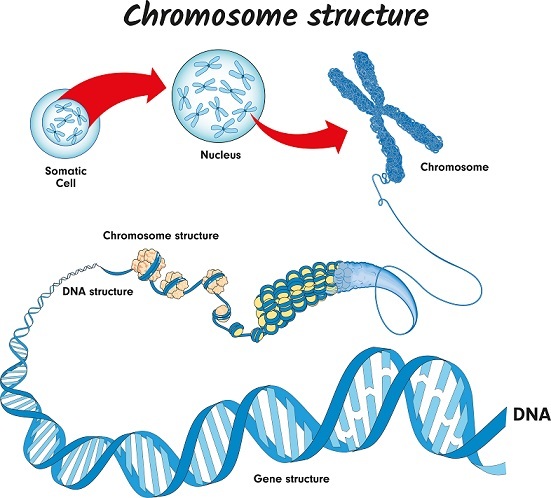
 Data Structure
Data Structure Networking
Networking RDBMS
RDBMS Operating System
Operating System Java
Java MS Excel
MS Excel iOS
iOS HTML
HTML CSS
CSS Android
Android Python
Python C Programming
C Programming C++
C++ C#
C# MongoDB
MongoDB MySQL
MySQL Javascript
Javascript PHP
PHP
- Selected Reading
- UPSC IAS Exams Notes
- Developer's Best Practices
- Questions and Answers
- Effective Resume Writing
- HR Interview Questions
- Computer Glossary
- Who is Who
Bacterial Artificial Chromosome (BAC)
Introduction
Bacterial Artificial Chromosome (BAC) is a powerful tool in Genetic Research
Bacterial Artificial Chromosome (BAC) is a widely used tool in genetic research for the manipulation and study of DNA. BACs are circular DNA molecules that are derived from the F-factor plasmid found in the bacterium E. coli. They can carry large inserts of DNA up to 300 kilobases in size, making them ideal for studying the function and organization of genes and genomes.
Origin
BACs were first developed in the mid-1990s by Dr. Shizuya and colleagues at the California Institute of Technology. Their work was based on the observation that plasmids derived from E. coli could be stably maintained in bacterial cells even when carrying large pieces of foreign DNA. This led to the idea that such plasmids could be used to clone and manipulate large fragments of genomic DNA.
Advantages
BACs have many advantages over other cloning systems, such as YACs (yeast artificial chromosomes) and cosmids. One of the main advantages is their high stability, which allows for the maintenance of large DNA inserts without the risk of losing or rearranging the DNA. This is because BACs have a low copy number and are maintained as large circular molecules, making them less prone to genetic rearrangements than other cloning systems.
Another advantage of BACs is their compatibility with high throughput cloning and sequencing technologies. BACs can be easily propagated in E. coli and can be used for large-scale DNA sequencing projects, such as the Human Genome Project. BACs can also be easily modified using modern molecular biology techniques, such as PCR and restriction enzyme digestion, allowing for the generation of specific mutations or deletions within the cloned DNA.
BACs have been used in a wide range of genetic studies, including the functional analysis of genes and the study of gene regulation and expression. BACs have also been used in the study of genetic diseases, such as cancer and developmental disorders. In these studies, BACs are often used to generate transgenic animals that carry specific mutations or deletions within the cloned DNA, allowing for the study of the effects of these genetic alterations on the organism.
In addition to their use in genetic research, BACs have also been used in biotechnology and medicine. BACs can be used to produce large quantities of recombinant proteins for use in drug development and other applications. BACs can also be used for gene therapy, where they are used to deliver therapeutic genes to cells or tissues.
Limitations
Despite their many advantages, there are some limitations to the use of BACs in genetic research. One of the main limitations is the size of the DNA insert that can be cloned into a BAC. While BACs can carry inserts up to 300 kilobases in size, larger genomic regions may require the use of other cloning systems, such as YACs or BIBACs (binary bacterial artificial chromosomes).
Another limitation of BACs is their low efficiency of transfection in mammalian cells. This limits their use in studies where the cloned DNA needs to be introduced into mammalian cells. However, this limitation can be overcome by using other vectors, such as viral vectors, for the delivery of the cloned DNA.
Conclusion
Bacterial Artificial Chromosomes (BACs) are a powerful tool in genetic research. BACs are stable, easy to propagate, and compatible with high throughput cloning and sequencing technologies. BACs have been used in a wide range of genetic studies, including the study of gene function, gene regulation, and genetic diseases. BACs have also been used in biotechnology and medicine to produce recombinant proteins and gene therapy.
FAQs
Q1. What is a BAC?
Ans. A BAC (Bacterial Artificial Chromosome) is a circular DNA molecule that is derived from the F-factor plasmid found in the bacterium E. coli. It is used in genetic research to clone and manipulate large fragments of genomic DNA.
Q2. What are the advantages of using BACs?
Ans. BACs have many advantages over other cloning systems, such as YACs and cosmids. One of the main advantages is their high stability, which allows for the maintenance of large DNA inserts without the risk of losing or rearranging the DNA. Another advantage is their compatibility with high throughput cloning and sequencing technologies. BACs can also be easily modified using modern molecular biology techniques, such as PCR and restriction enzyme digestion.
Q3. What are the limitations of using BACs?
Ans. One of the main limitations of using BACs is the size of the DNA insert that can be cloned into them. While BACs can carry inserts up to 300 kilobases in size, larger genomic regions may require the use of other cloning systems, such as YACs or BIBACs. Another limitation is the low efficiency of transfection in mammalian cells, which limits their use in studies where the cloned DNA needs to be introduced into mammalian cells.
Q4. What are some applications of BACs?
Ans. BACs have been used in a wide range of genetic studies, including the functional analysis of genes, the study of gene regulation and expression, and the study of genetic diseases. BACs have also been used in biotechnology and medicine to produce recombinant proteins and gene therapy.
Q5. Who developed BACs?
Ans. BACs were first developed in the mid-1990s by Dr. Shizuya and colleagues at the California Institute of Technology.

